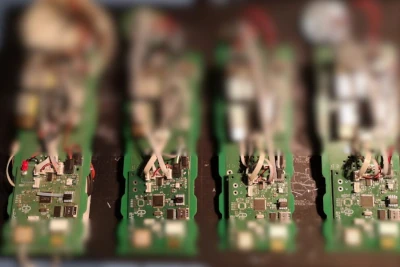Concept
RATIONALE
As its surroundings changes radically and climate conditions deteriorates, Europe and its Members adapt to these current challenges. To this end and in order to maximise their usability, the EC established a framework of a common policy (EU Security Market study) by categorising potential technologies per security domain, including Critical Infrastructure (CI) Protection. This trend is indicative for the importance and significancy that the EC gives to these matters. Any potential disruption, either intentional as a terrorist attack or a natural disaster, may risk smooth operations of such structures that may have a severe impact on a local society and its daily activities or well-being. Current advancements in various technologies can be particularly beneficial in CI protection especially when they can provide a timely support without the necessity of a human in the loop.
APPROACH
TESTUDO will provide an innovative solution for CI protection, adopting a three pillar framework:
![]() novel sensing components, including dynamically moving sensors using unmanned assets and fixed sensory systems, covering also remote with limited connection territories
novel sensing components, including dynamically moving sensors using unmanned assets and fixed sensory systems, covering also remote with limited connection territories
![]() knowledge extraction and improvement based on AI frameworks and recent advancements of ML architectures
knowledge extraction and improvement based on AI frameworks and recent advancements of ML architectures
![]() prevention and prediction models to mitigate the impact and facilitate the recovery process of hazardous events
prevention and prediction models to mitigate the impact and facilitate the recovery process of hazardous events
TESTUDO will deliver a novel data-driven and process-oriented surveillance and intelligence platform for increased autonomy and improved situation awareness, incorporating:
![]() innovative autonomous platforms comprised by a set of unmanned vehicles and individual fixed sensors
innovative autonomous platforms comprised by a set of unmanned vehicles and individual fixed sensors
![]() effective transmission of heterogeneous multimodal data streams to improve the critical issue for smooth operations and the integrity of CIs
effective transmission of heterogeneous multimodal data streams to improve the critical issue for smooth operations and the integrity of CIs
![]() advanced detection, monitoring and prediction tools delivering pertinent information to the operator
advanced detection, monitoring and prediction tools delivering pertinent information to the operator
![]() virtual decision-making tool
virtual decision-making tool
TECHNOLOGIES
TESTUDO aims to equip CI operators and other relevant agencies with innovative technologies reinforced with research tools for optimal response and prediction/prevention, by employing:
![]() Autonomous Response and Cognitive Intelligence
Autonomous Response and Cognitive Intelligence
- Optimal resource allocation
- Threat identification by processing optronics data
- Edge computing for limited connected unmanned vehicles
- CBRN materials identification
- Autonomous response on cyber-attack identifications
![]() Improved HMI for critical infrastructure surveillance
Improved HMI for critical infrastructure surveillance
- Optimized 3D terrain and infrastructure mapping
- Fusion schemes of numerous modalities for improved data representation
- Threat assessment via XAI technologies
- Predictive intelligence and improved HMI via Digital Twins
![]() Short and long-term deployment for large-scale and cross-sectorial trials
Short and long-term deployment for large-scale and cross-sectorial trials
- Validation of the proposed solutions in a series of use-cases
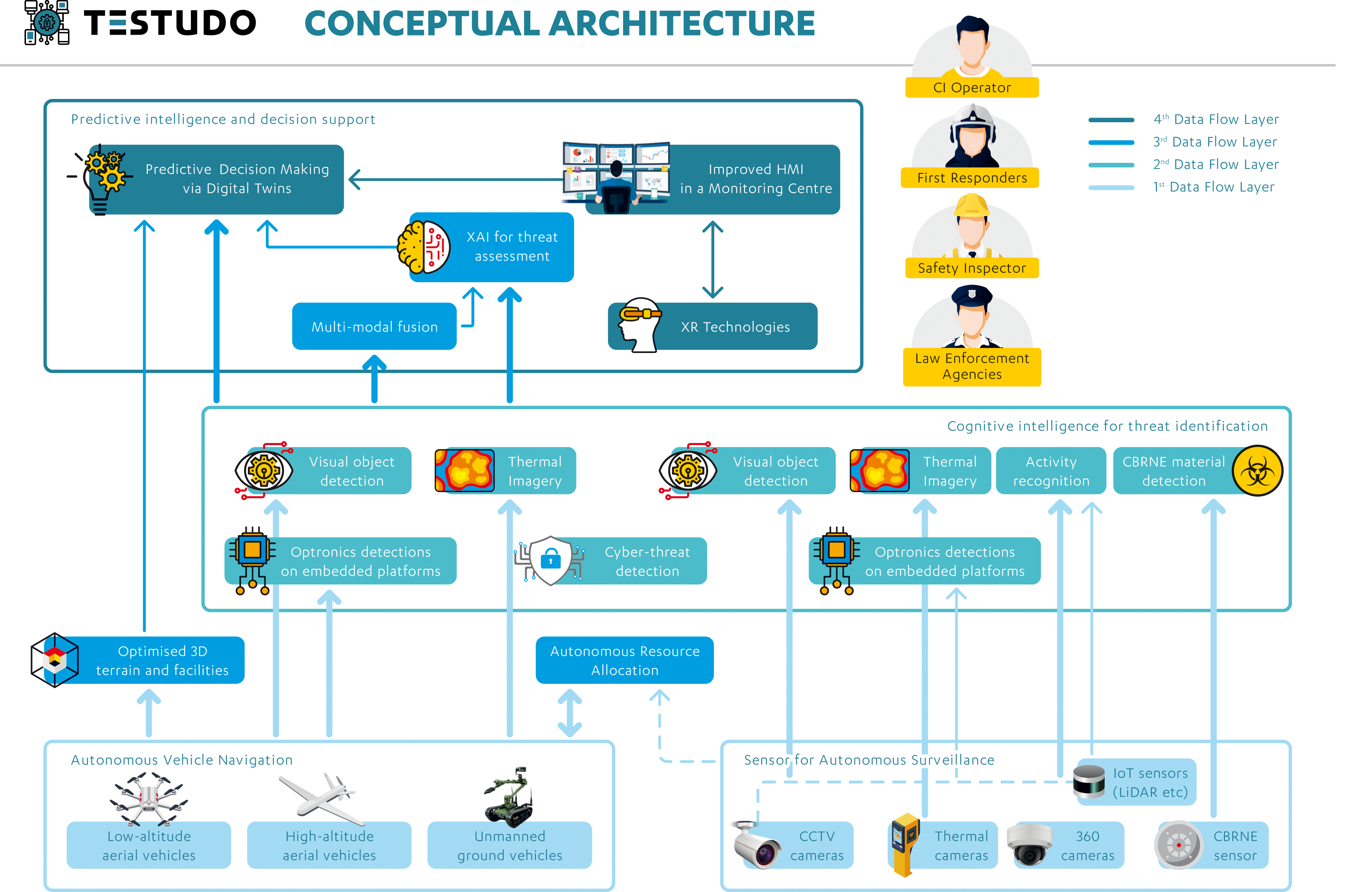
TESTUDO ASSETS
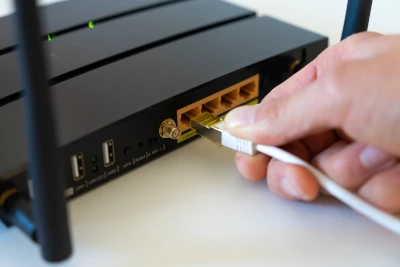
- Connected laptops
- Dedicated routers
- Wireless equipment
- Cabling
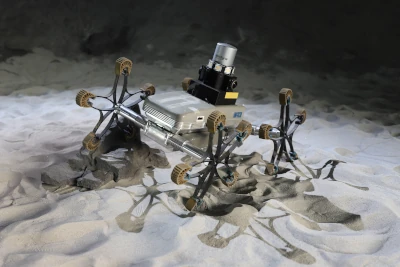
- Light-weight rover
- Weight: 16 kg
- Size: 95x56x50cm
- Energy autonomy: 5 hr
- High mobility
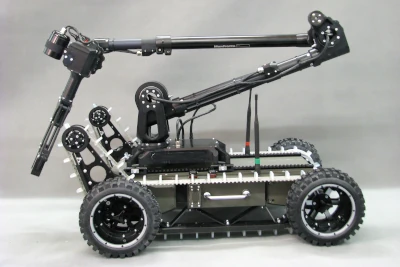
- Weight: 50kg
- Size: 100x60x60cm
- Max speed: 6,5km/h
- Manipulator lift: up to 15kg
- Battery time: ~1h
- High mobility
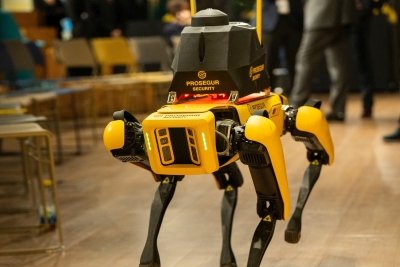
- Weight: 32.7 kg
- Size: 110x50x61cm
- Max speed: 1.6 m/s
- Battery time: ~1,5h
- High mobility
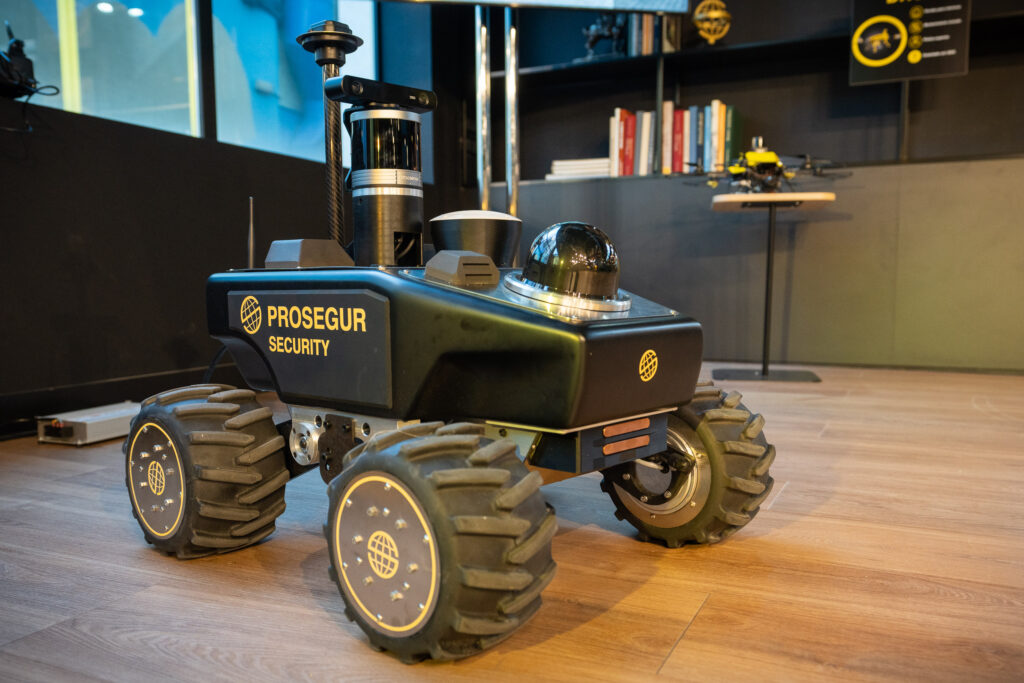
- Weight: 65kg
- Size: 72x61x85cm
- Max speed: 3m/s
- Load capacity: 50kg
- Energy autonomy: 5 hr
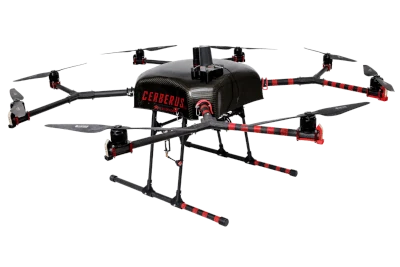
- Average flight time: 25 min
- Max payload weight: 5kg
- Max take-off weight: 16kg
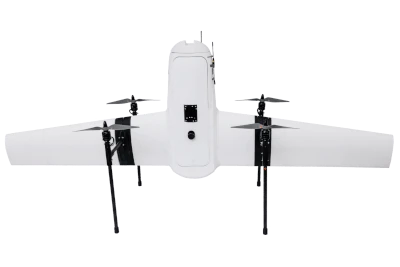
- Average flight time: 60 min
- Max take-off weight: 3kg
- Wing Span: 14,4 cm
- Fuselage: 5,2 cm
- Speed: 16 m/s
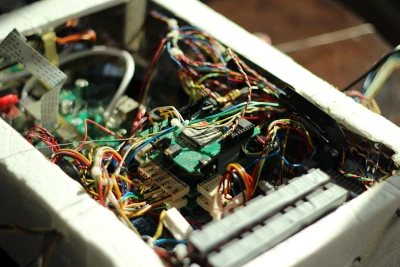
- Tethered high-altitude sensor carrier platform
- 24/7 operation

- Open XR compatible headset
- Head, hand and eye tracking capabilities
- Microphone/speaker
